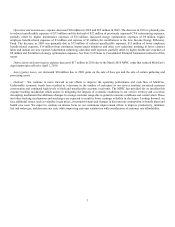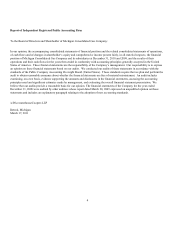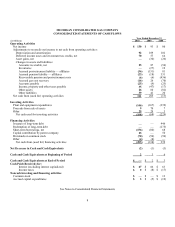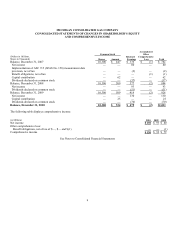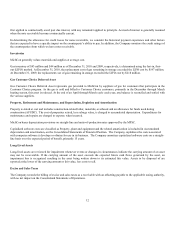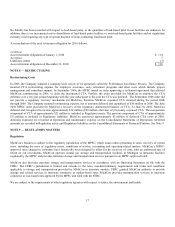DTE Energy 2010 Annual Report Download - page 14
Download and view the complete annual report
Please find page 14 of the 2010 DTE Energy annual report below. You can navigate through the pages in the report by either clicking on the pages listed below, or by using the keyword search tool below to find specific information within the annual report.12
first applied to contractually owed past due interest, with any remainder applied to principle. Accrual of interest is generally resumed
when the note receivable becomes contractually current.
In determining the allowance for credit losses for notes receivable, we consider the historical payment experience and other factors
that are expected to have a specific impact on the counterparty’ s ability to pay. In addition, the Company monitors the credit ratings of
the counterparties from which we have notes receivable.
Inventories
MichCon generally values materials and supplies at average cost.
Gas inventory of $43 million and $44 million as of December 31, 2010 and 2009, respectively, is determined using the last-in, first-
out (LIFO) method. At December 31, 2010, the replacement cost of gas remaining in storage exceeded the LIFO cost by $147 million.
At December 31, 2009, the replacement cost of gas remaining in storage exceeded the LIFO cost by $218 million.
Gas Customer Choice Deferred Asset
Gas Customer Choice Deferred Asset represents gas provided to MichCon by suppliers of gas for customers that participate in the
Customer Choice program. As the gas is sold and billed to Customer Choice customers, primarily in the December through March
heating season, this asset is reduced. At the end of an April through March cycle each year, any balance is reconciled and settled with
the various suppliers.
Property, Retirement and Maintenance, and Depreciation, Depletion and Amortization
Property is stated at cost and includes construction-related labor, materials, overheads and an allowance for funds used during
construction (AFUDC). The cost of properties retired, less salvage value, is charged to accumulated depreciation. Expenditures for
maintenance and repairs are charged to expense when incurred.
MichCon bases depreciation provisions on straight-line and units-of-production rates approved by the MPSC.
Capitalized software costs are classified as Property, plant and equipment and the related amortization is included in Accumulated
depreciation and amortization, on the Consolidated Statements of Financial Position. The Company capitalizes the costs associated
with computer software it develops or obtains for use in its business. The Company amortizes capitalized software costs on a straight-
line basis over the expected period of benefit, primarily 15 years.
Long-Lived Assets
Long-lived assets are reviewed for impairment whenever events or changes in circumstances indicate the carrying amount of an asset
may not be recoverable. If the carrying amount of the asset exceeds the expected future cash flows generated by the asset, an
impairment loss is recognized resulting in the asset being written down to its estimated fair value. Assets to be disposed of are
reported at the lower of the carrying amount or fair value, less costs to sell.
Excise and Sales Taxes
The Company records the billing of excise and sales taxes as a receivable with an offsetting payable to the applicable taxing authority,
with no net impact on the Consolidated Statements of Operations.



